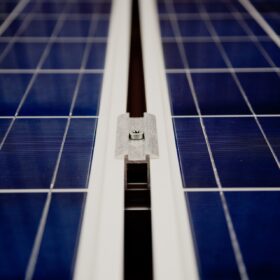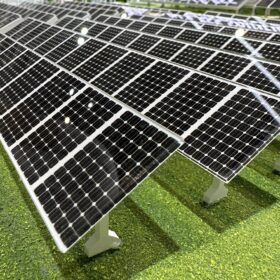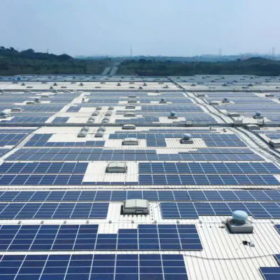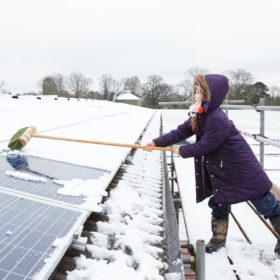Cooling PV modules with lauric acid and nanoparticles
Thai researchers developed three organic phase-change material (PCM) mixtures with nanoparticles to cool PV modules and improve efficiency. They used lauric acid blended with aluminum oxide, copper oxide, and magnesium oxide in an optimal 94:6 weight ratio, boosting module efficiency by up to 14.11%.
Digital twin for autonomous aerial monitoring of PV power plants
An international research team has created a digital twin that purportedly enables analysis of different scenarios on PV plants’ aerial monitoring. The new tool is claimed to reduce the risk associated with real-world experimentation and help identify the most effective strategies to improve PV system monitoring.
Hydrogen detection system for safety, quality control
Researchers in Japan have developed an optimized hydrogen gas measurement using TDLAS technique. It is reportedly able to achieve a detection range of hydrogen gas concentration of 0.01% to 100%. The group said that it can improve hydrogen safety and in turn, its adoption.
Research shows tilt angles over 30 degrees delay solar module thermal failures
A Chinese-Italian research team has analyzed the influence of different tilt angles on the thermal failure of the photovoltaic façades or roofs in fire conditions, finding that when the tilt angle exceeds 30 degrees, the time to failure increased significantly.
3D-printed anti-reflective cover based on aluminium oxide increases PV cell efficiency by 25%
An international team of scientists have combined cyclic-olefin copolymers with a powder of aluminum oxide to create a filament that can be used by a 3D printer to create anti-reflective covers for PV modules. The proposed innovation can reportedly improve PV cell efficiency by over 25%.
Controlling grid fluctuations via solar module cooling
A research group has proposed a novel method to control ramp rates in power networks. Its control optimization is based on weather, load and production forecast data. The scientists simulated the operation of the proposed technique and reached a ramp rate reduction of up to 76.2%.
Researchers analyze wind cooling effect for 5.9 MW rooftop PV array
Researchers have analyzed how wind speed and direction affect the cooling of a rooftop PV plant with 10,806 panels. They say that winds from behind were less effective due to the roof slope and the minimal gap between the panels and the roof, but wind from other directions could contribute to a cooling effect of up to 7 C.
Ultra-short-term PV power forecast based on dung beetle algorithm
Researchers have developed a novel deep-learning method to predict ultra-short-term PV power, using an optimization method that is based on the behavior of dung beetles. The proposed approach reportedly performed better than seven other conventional prediction methods over a 1-year period.
New passivation strategy increases efficiency of chloride-iodide-based perovskite solar cells by 15%
Although local defects in chloride-iodide-based perovskite are hard to avoid due to ion migration, a group of scientists have now found a way to passivate them. They used different combinations of 4-chlorobenzylammonium chloride and 4-chlorobenzylammonium bromide beneath the hole transport layer and reached up to 15% improvement in efficiency.
Octaspherosilicates-based anti-icing coating for PV systems
Developed by scientists in Poland, the new coating uses transparent silicone-epoxy modified with functionalized octaspherosilicates. The researchers have created five samples, each with a different combination of chemicals, and have found that ice adhesion was reduced by up to 43%, with freezing delay time growing by up to 70 times.










